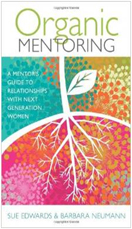Sometimes Latest is Greatest
Last week I picked up a newly released second edition of a book on the role of women in ministry. Written by a well-known theologian, it was acclaimed as the latest in scholarship on backgrounds. And I was surprised to discover its chapter on the first-century Greek and Roman world drew on only one secondary source later than 1980.
Though this author downplayed the importance of culture for understanding 1 Corinthians 11 and 14, and 1 Timothy 2—some of the Bible’s “woman” texts—he went on to talk of women in the ancient world being under male authority for life (which was not always the case), women veiling the fronts of their faces (probably not ever the case except on wedding days), and other long-outdated information. Unfortunately, his historical understanding, based on old information, greatly affected how he understood the texts.
Yet especially when it comes to understanding backgrounds on the “women” texts, much has changed, particularly in the past half-century.
First, the field of women’s and gender history has exploded as women have joined men in the academy. And women’s involvement has added a new emphasis on social history. Whereas much of political history focuses on emperors and kings, social history asks all sorts of questions about commoners such as, “What was the average life expectancy?” and “What sort of work did men and women do?” and “Did women sit or lie down during childbirth?” Gender analysis also has us asking, “What did first-century Romans consider feminine?” and “What made a Greek man manly?”
With new emphases in history departments have come new methodologies, including a reconsideration of primary sources. In the past when an ancient writer criticized women for being too talkative, scholars have tended to take such assessments at face value. But today’s historian would look for additional clues. So when reading a writer such as Cicero, who used “woman” imagery to insult Antony in The Second Philippic, a contemporary scholar would consider how the author is using gender as part of a rhetorical strategy. Is Cicero including his negative assessment of women as part of a scheme of insulting Antony’s enemies?
Second, the academic field of semiotics has seen monumental growth. “Semiotics” is the study of symbols and signs as elements of communicative behavior. Consider what a ring worn on the fourth finger, left hand communicates in the West, or what some think of a man who wears a baseball cap to a funeral. And a white dress on a woman’s wedding day says something different from what a red one would express. In terms of the ancient world, that would include knowing how and where a woman covered her head, with what she covered it (a veil or hair and/or fillets) and what doing so expressed in her context. Any explanation of the head-covering debate that ignores recent findings in semiotics is bound to be based on erroneous cultural information.
Next, a deeper reading of ancient texts has also led to finding data about women hidden between the lines. Since Octavian passed laws allowing exemption from manus (male supervision) for citizen mothers of three children, the historian today will observe that “exemption as incentive” indicates women preferred freedom to being under authority. But the law itself also indicates that not all women lived under such authority all their lives.
Today’s scholars are also more apt to consider the number of years separating an ancient writer from the event he (it was usually a “he”) describes. In the first century Strabo reported on cult prostitution in Corinth’s distant past (from his perspective). But archaeologists today are seriously challenging the accuracy of such hearsay. Yet how many of us were taught that Roman religion was filled with temple prostitutes?
Add to all this the wealth of additional literary, archaeological, epigraphic, and iconographic evidence uncovered in the past half-century. The wording of many inscriptions is now available for search in a massive online concordance, making it possible for scholars to search by word, phrase, and geography without having to pore over books in a distant library or read them at the actual sites.
All of this has greatly aided us in reconstructing visions of first-century life in family, religion, and society. And because most people in the early church were non-elites, historians interested in early Christian backgrounds have greatly benefited from these developments.
So next time you’re browsing titles on the role of women, check out the footnotes and bibliographies. Are the sources up-to-date? The fundamental truths of Christianity will never change, but how we view biblical living may. Our understanding of the contexts in which texts were written has increased exponentially. And we often base applications today on our best parallels to what was happening in the world at the time.



5 Comments
LLM
Great post. I recently read
Great post. I recently read an academic book called "Women in the World of the Earliest Christians" by Lynn Cohick. I'd highly recommend it. It also takes a fresh approach to ancient sources, utilizing new methodologies. It gave me a new perspective on women back then.
I only recently discovered Tapestry, and am so thankful that I did. I sometimes get discourged with "women's" things, as they often seem to lack depth or substance. Or are only focused on women's "roles". Yet, women are more than their role in life! I'm appreciating Tapestry, and especially your posts Sandra.
Sandra Glahn
A couple of history resources
I love Dr. Cohick’s book. In fact I require it for all my seminary students. I wrote a Tapestry post about it here:
Women in the World of the Earliest Christians
http://blogs.bible.org/tapestry/sandra_glahn/new_resource_was_junia_joanna_and_other_questions_worth_exploring
I have another post that’s more about semiotics. You can read that here:
Kelly Olson, Dress and the Roman Woman
http://blogs.bible.org/tapestry/sandra_glahn/not_with_braided_hair…or_pearls__
Thanks for your kind words, and for reading Tapestry!
LLM
Sandra, Would you believe
Sandra, Would you believe that I stumbled upon Dr. Cohick's book by "chance" at my local public library?! I did. I was surprised to see a Baker Academic book period, let alone one on women in the the time of early Christianity. I want to get my own copy for future reference use. That is great you have your seminary students read it. I am a MABS student at DTS by the way, via an extension site. Thanks for referring me to your other related posts.
Sue Bohlin
I am so glad for your PhD research!
I love learning what you have gleaned from all the research and reading you've done for your doctorate! I'm looking forward to hearing you explode myths and expand our understanding of first-century Christianity.
So. . . did women sit or lie down during childbirth? And what's a fillet? 🙂
Sandra Glahn
Of Childbirth and Headbands
Fillets of wool, linen, thread, or even metal inset with stones were called vittae, and we see them as part of the clothing and presentation of a matron. They were used for binding hair. I would say fillets were "headbands," but you might think of headbands worn behind the ears, as we wear them (vertically). Yet a matron in the Greco-Roman world would wear hers either vertically or horizontally as a strip across the forehead. People in those days painted their statues, and we’re seeing more and more that fillets were painted on, which is why we missed their presence in many cases for so long. (If first-century Romans were to see Washington DC today, they would doubtless wonder why all our marble structures are “nude” or unfinished instead of painted, much as we would view unfinished wood furniture.)
As for childbirth, at this point the best evidence seems to suggest that laboring women sat upright, supported, when possible, by a crescent-shaped birthing stool.